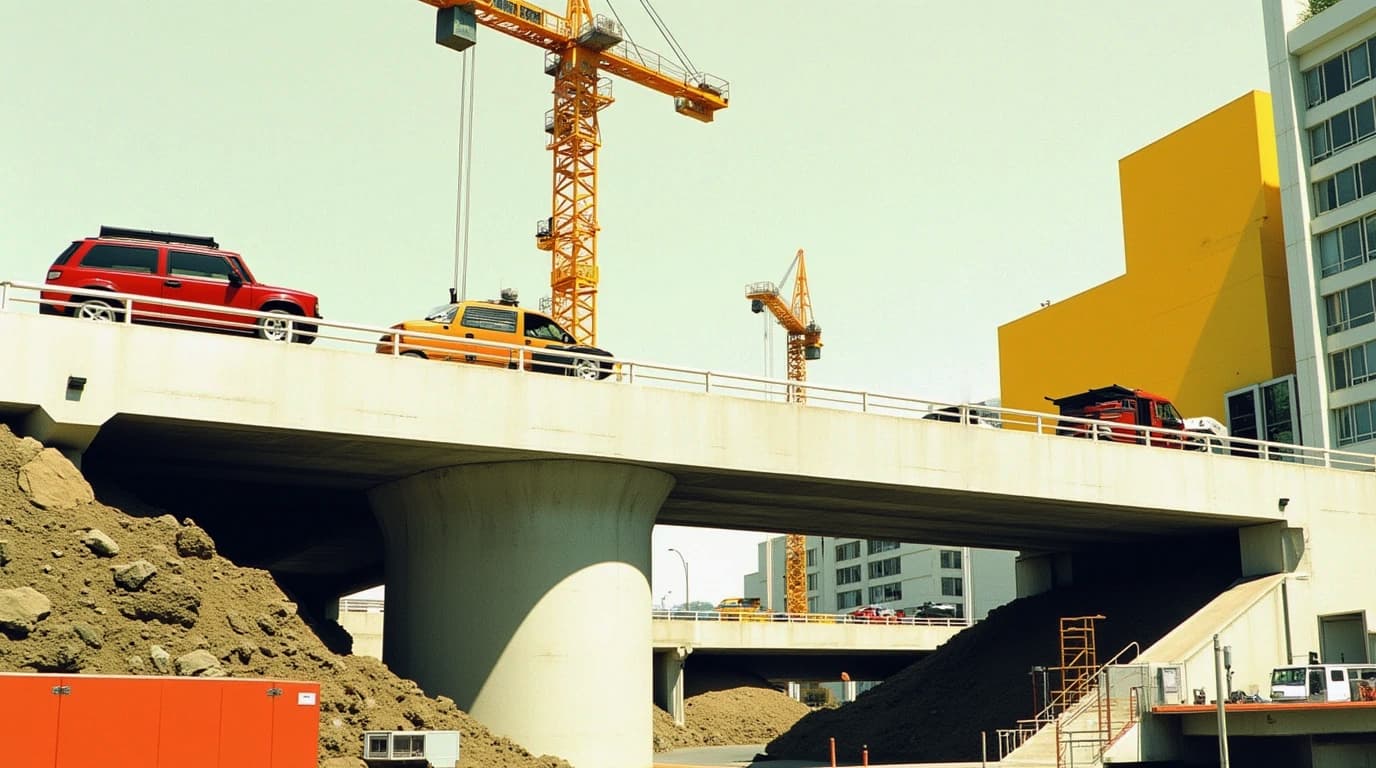The Evolution of Building Materials in Construction
The landscape of construction materials has undergone a remarkable transformation over the past decades. From traditional concrete and steel applications to innovative composite solutions, the evolution of building materials continues to reshape both infrastructure and architectural projects. The interaction between industrial construction and residential building has created an ecosystem where technologies and solutions flow freely between sectors, which leads to advances in materials science and application.
Modern construction technology has enabled engineers and architects to push the boundaries of what’s possible in both bridge renovation and building construction. These innovative approaches have been widely adopted by construction specialists, including New Jersey siding experts, who understand the importance of material durability in various weather conditions. The lessons learned from large-scale infrastructure projects have consistently influenced residential construction and create a valuable knowledge exchange that benefits both sectors.
Bridging Industrial and Residential Solutions
In recent years, the transfer of construction technologies between industrial and residential sectors has become really important. Leading construction experts have successfully adapted industrial-grade materials for residential applications and demonstrated the versatility of modern building solutions. This cross-sector adaptation has led to significant improvements in residential construction durability and performance.
Material innovation in bridge construction has particularly influenced the development of residential building materials. The focus on weather resistance and structural integrity in bridge renovation has led to breakthroughs in protective coatings and composite materials that are now commonly used in home construction. These adaptations have revolutionized how we approach residential building projects, particularly in areas with challenging weather conditions.
Industrial-Grade Materials in Modern Construction
Bridge Renovation Solutions
The world of bridge reconstruction has been transformed by the introduction of modern composite materials. It have an excellent strength-to-weight ratio and provide greater resistance to environmental factors than traditional options. Protective coatings developed for bridge infrastructure have set new standards in durability and weather resistance, creating a foundation for innovations in other construction sectors.
Modern bridge renovation employs sophisticated weatherproofing technologies that protect structural elements from environmental damage. These solutions often involve multiple layers of protection, which include advanced sealants and protective membranes that can withstand extreme conditions while maintaining structural integrity.
Residential Applications
The evolution of siding technology represents one of the most successful adaptations of industrial construction principles to residential applications. Modern siding solutions incorporate many of the same protective principles used in bridge construction and incorporate multi-layer protection systems and advanced composite materials. These materials provide durability while maintaining aesthetic appeal, making them ideal for residential applications.
The development of advanced polymer composites has increased the durability and strength of residential siding. These materials provide excellent protection against UV radiation, moisture and temperature fluctuations, but require minimal maintenance. The integration of industrial-grade protective technologies has led to residential solutions that can withstand decades of exposure to hard environmental conditions.
Future Developments
Emerging Technologies
The future of building materials continues to evolve in the bridge rehabilitation and housing sectors. Nanotechnology is playing more and more important role in developing new protective coatings and materials. These advanced solutions promise to deliver unprecedented levels of durability and weather resistance while reducing overall maintenance requirements.
Smart materials are emerging as a promising development in both infrastructure and residential construction. These materials can adapt to environmental conditions and provide improved protection. The integration of sensors and sensing elements allows real-time monitoring of material condition. This ensures timely maintenance and increased durability.
Industry Trends
There has been a shift in the construction industry towards sustainable solutions that combine sustainability and environmental responsibility. Sustainable materials becomes common in bridge rehabilitation and civil engineering. They are comparable or better than traditional options, and reduce the environmental impact.
The focus on cost-effectiveness continues to drive innovation in materials development. Manufacturers are developing new composite materials that offer improved durability and reduced installation costs. These advances are especially evident in residential siding, where new manufacturing techniques are creating more efficient and cost-effective products.
Conclusions and Recommendations
The evolution of construction materials from infrastructure to architectural applications demonstrates the valuable cross-pollination of ideas between sectors. The successful adaptation of industrial-grade materials for residential use has created new opportunities for improving building durability and performance.
Key takeaways from this analysis include the importance of:
- Continuing investment in material research and development
- Maintaining focus on durability and weather resistance
- Balancing performance requirements with cost considerations
- Embracing sustainable solutions for future construction needs
The future of construction materials looks promising, with ongoing developments in both industrial and residential applications promising to deliver even more effective solutions for building protection and renovation. The continued exchange of technologies and expertise between bridge renovation and residential construction sectors will undoubtedly lead to further innovations in material science and application techniques.
These advances will continue to benefit both infrastructure projects and residential construction, ensuring that buildings and bridges alike can withstand the challenges of time and weather while maintaining their structural integrity and aesthetic appeal.




